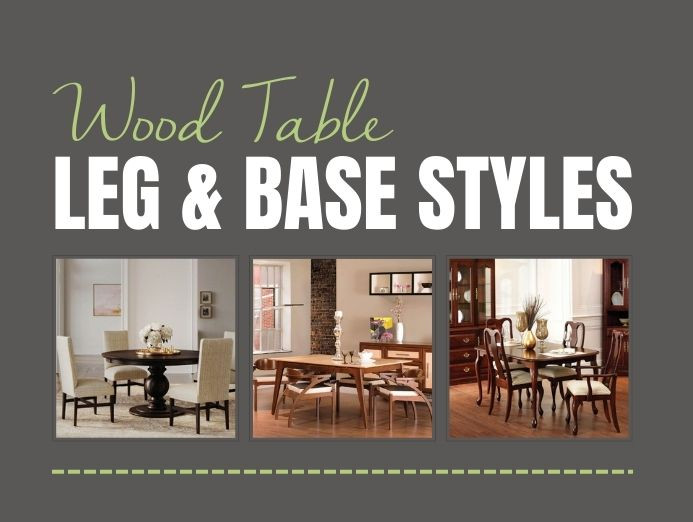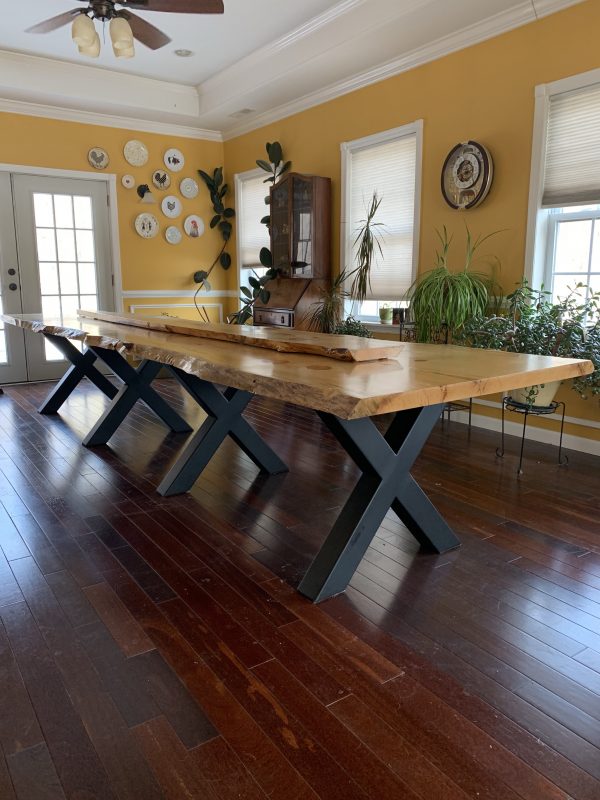How to Maintain and Care for Your Dining Room Table Legs
How to Maintain and Care for Your Dining Room Table Legs
Blog Article
Expert Tips for Putting Up Dining Space Table Legs for Optimum Security
When it pertains to mounting dining-room table legs, accomplishing maximum security is extremely important for both capability and appearances. The process begins with choosing the right products and hardware, adhered to by precise alignment and factor to consider of weight circulation. Each action plays a vital function in making sure that the completed product withstands everyday use without jeopardizing safety or layout honesty. However, comprehending the subtleties of these components can substantially affect the overall outcome. What particular strategies can improve security also further?
Select the Right Legs
When picking the suitable legs for your dining area table, it is necessary to take into consideration both performance and looks. The legs you select will substantially affect the general layout and stability of the table. Evaluate the table's planned usage; if you expect constant celebrations, tougher legs, such as those made from solid timber or metal, might be much more suitable, as they offer raised toughness and support.
Typical dining tables typically vary from 28 to 30 inches in height, so make certain the legs straighten with this requirement for comfort. Conical legs can include a contemporary touch, while turned legs might communicate a more timeless visual.

Select Appropriate Equipment
How can the best hardware improve the security and durability of your dining-room table? The selection of suitable hardware is critical to making sure that the legs of your table are securely connected and able to withstand routine usage. Top notch screws, screws, and brackets supply the needed stamina to support the weight of the table, as well as any extra tons put upon it throughout meals or gatherings.
When selecting screws, go with those made from durable products such as stainless steel or brass, which withstand deterioration and maintain stability gradually. The size of the screws is equally important; they should penetrate deeply into the table's structure without compromising integrity. For bolted links, think about utilizing lock washers to stop loosening due to resonance or activity.
In addition, making use of edge brackets can add added assistance, particularly for bigger tables or those with larger tops. These braces distribute weight evenly and aid preserve the table's form. Guaranteeing that the hardware you pick is appropriate for the specific materials of your table will further enhance its total security and longevity, enabling you to appreciate your eating experience for several years to find.
Ensure Proper Placement
Proper positioning of dining-room table legs is crucial for both visual charm and useful stability. Misaligned legs can lead to an uneven table top, which may not just be aesthetically unattractive yet additionally endanger the table's use. To accomplish ideal placement, start by measuring the distance from the table's edges to the leg attachment points. This guarantees that each leg is located equidistant from the edges, creating a well balanced appearance.
Make use of a degree throughout installation to validate that each leg is vertical to the table top. This step is essential, as even small discrepancies can escalate right into significant security issues with time. It is recommended to mark the desired leg settings on the underside of the table with a pencil or covering up tape prior to protecting them. This method works as an aesthetic overview, permitting adjustments as needed.
Additionally, confirm the placement after the preliminary screws are tightened, as changes may be essential prior to fully securing the hardware. By prioritizing correct positioning, you not just improve the table's overall layout however likewise make certain that it remains steady and useful for several years to come.

Consider Weight Distribution
After ensuring correct placement of the dining-room table legs, it is very important to think about weight distribution to improve stability and functionality. dining room table legs. Proper weight distribution is critical in avoiding tottering and making certain that the table can sustain its designated tons without threat of tipping or breaking down
When positioning the legs, ensure they are put at equivalent distances from the center of the table to uniformly distribute the weight across the framework. Take into consideration this article the weight of the table top and any kind of items that will frequently relax on it, such as ornamental items or tabletop devices. Tables with much heavier surfaces must preferably have legs positioned closer to the edges, as this makes best use of the base of support and decreases the threat of instability.
Furthermore, if the table is intended for usage in a high-traffic location, consider making use of learn the facts here now much heavier products for the legs or adding maintaining components, such as cross-bracing or a reduced rack - dining room table legs. These changes can assist maintain balance and protect against moving throughout usage. Inevitably, a well-considered weight distribution technique will substantially enhance the table's total efficiency, ensuring it stays a practical and appealing focal point for your dining area
Examination Stability Prior To Usage
Evaluating the security of the eating area table before use is a vital action that must not be ignored. Making certain that the table is secure and safe and secure can prevent mishaps and prolong the lifespan of the furniture. Begin by using mild stress to different factors on the table surface. Push down on the facility and after that along the edges, observing any wobbling or moving. Identify the legs or joints that might call for adjustment. if the table reveals instability.
Following, check that all fasteners and screws are tightened up properly. Loose links can result in instability and possible damages with time. If essential, make use of timber glue on joints to improve stability, guaranteeing to enable appropriate drying time.

Final Thought
To conclude, the installment of dining room table legs calls for cautious factor to consider of products, placement, hardware, and weight distribution to accomplish optimum security. By choosing sturdy legs and high-quality bolts, guaranteeing accurate placement, and distributing weight uniformly, the this article structural stability of the table can be dramatically boosted. Conducting a security test before normal use even more makes sure that the table will certainly stand up to daily pressures, consequently providing a reliable and safe dining experience.
When it comes to setting up eating space table legs, accomplishing maximum security is paramount for both capability and aesthetic appeals. The legs you select will dramatically impact the total style and security of the table (dining room table legs). Basic dining tables usually range from 28 to 30 inches in height, so make sure the legs straighten with this criterion for convenience.Appropriate alignment of eating area table legs is necessary for both aesthetic charm and functional stability.In verdict, the installment of eating room table legs needs careful factor to consider of products, alignment, weight, and equipment circulation to achieve maximum stability
Report this page